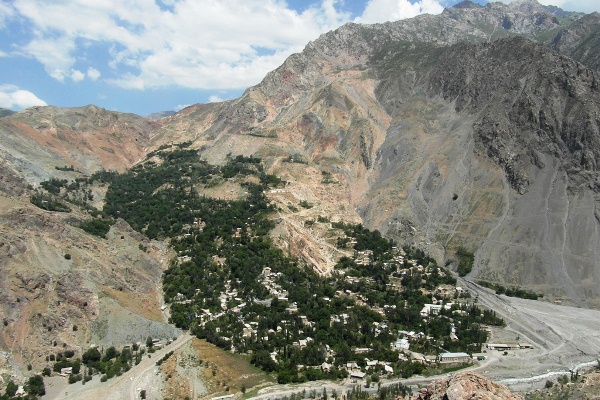
Growing up in middle class America, I take a lot of things for granted. I freak out if a thunderstorm knocks out power for even a few hours and heaven forbid I lose my internet connection at home. I have never known life without indoor plumbing and driving on dirt roads has never been part of my daily routine. And while I prefer to drink my water out of a Brita filter, I never worry about getting sick if I drink straight from the tap.
I figured spending a month living in small villages in the Zerafshan Valley of Tajikistan would be quite an eye-opener.
The Villages of Shing and Padrud
My first stop was in the village of Shing, located 42 kilometers from Penjikent, the nearest major city in western Tajikistan. The name of the village means “green pasture” in the ancient Sogd language. Around 1700 people currently live in Shing, but many have left over the years due to landslides, mudslides and earthquakes. Typically only the men in the village work and most are engaged in raising cattle, agriculture or craftsmanship. Shing has a school, a hospital and two mosques and around 200 inhabitants have a higher education, which is high for a mountain village in Tajikistan.
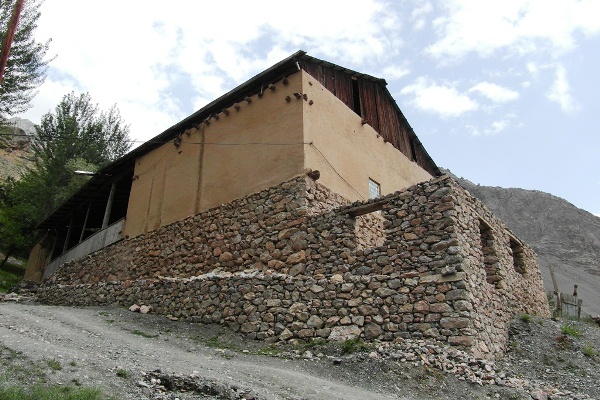
After two weeks in Shing, I moved on to Padrud, which fittingly means “place along the river” in Tajik. About an hour’s drive from Shing along winding dirt roads, Padrud is located in between the fourth and fifth of the Seven Lakes and is a fraction of the size of Shing, with just around 500 residents. The primary occupation of village men is raising cattle, with most of the work done in the summer months when the mountain pastures are accessible. Women may be involved with milking cows and collecting butter, cream and milk for the winter. Padrud also has a school, mosque and small hospital.
Traditional dress for women in both villages consisted of a flowing, almost ankle-length dress, worn with baggy pants underneath. While I saw some women in Shing wearing short-sleeves, I saw only long-sleeves in Padrud, with the dresses often worn with sweaters or shawls on top, despite temperatures nearing 100 degrees Fahrenheit. In both villages, women covered their hair with scarves, but the women in Padrud tended to be a bit more conservative, often tying their scarves under their chins in order to partially cover their faces. In Shing, they typically tied their scarves behind their heads so that their entire face and much of their hair was still visible.
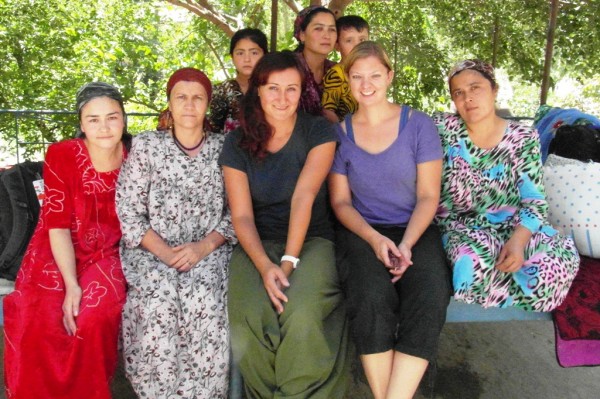
Life in the Villages
Day to day life in the two villages could not have been more different. My host family in Shing was large – my host parents were around my parents’ age and had eight children and at least ten grandchildren. While only the three eldest siblings lived at home, the rest of the family seemed to spend most of their time there as well (it took me a while to figure out who everyone was and where they all lived – initially I thought they all lived at the house where I was staying and I couldn’t figure out where there was room for everyone!). The family was also active in agriculture, with fruit like apricots and cherries growing in their yard and various vegetables growing in a garden plot they owned further up in the mountains.
Shing also seemed to be more traditional as the family rose with the sun and the women immediately set about cooking and cleaning. The younger children, particularly the boys, seemed to have more free time to play around or to go down to the river and fish. One day, I watched as the boys spurred on a fight between two roosters and then laughed and cheered as the roosters chased each other around the yard (I think the loser became the next day’s lunch and dinner). Another day, half the village seemed captivated by the appearance of a large backhoe digging in the river.

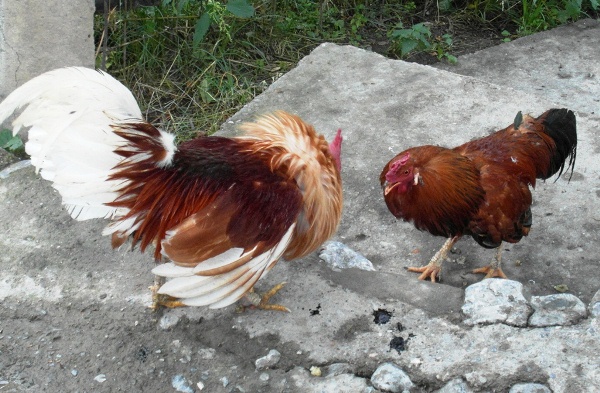
On the other hand, my family in Padrud was much smaller and younger, with my host “parents” actually being about my age with three children, the oldest of which was 10. My host mother’s parents lived with them and my host father’s brother lived just across the road, but I didn’t see much of either. The family seemed to be much more active in tourism than my Shing family, receiving visitors nearly every day.
My host father often spent his days building an addition to the existing house in order to have more room for tourists and my host mother worked as a nurse in the small village hospital. The kids were too young to help much with household chores aside from occasionally helping to prepare and serve tea or meals. They seemed to spend their days playing and entertaining each other. My host mother also recoiled at the thought of having any more kids – she cringed at how many children my Shing hosts had!
Living Conditions
Both homes in which I stayed were larger and more comfortable than I expected. Seemingly constructed primarily with cement, they were also more insulated and more structurally sound than the wooden rehab project I called home for a month outside of St. Petersburg. As is common in Tajik villages, I slept on the floor, on a mattress called a kurpacha, which was probably more comfortable than some hostel beds I have encountered. While it could get very hot during the days, evenings in the villages were quite cool so I was glad for a thick duvet as well.
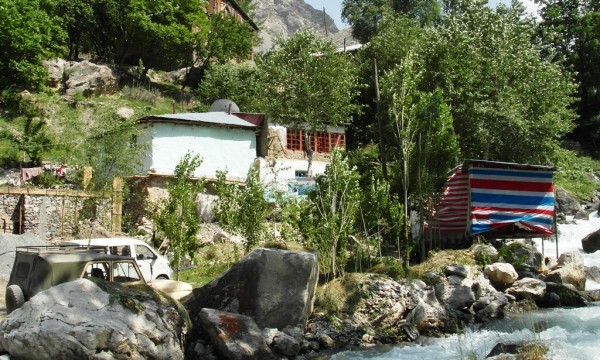

Likewise, it is customary in Tajikistan to eat meals, drink tea and pretty much do most other socializing while sitting on the floor, sometimes gathered around a very short table. My family in Shing had a tapchan (a free-standing, porch-like structure) in the yard that was covered with kurpachas and pillows for exactly this purpose and my family in Padrud had a couple tapchans sitting right on the river bank.
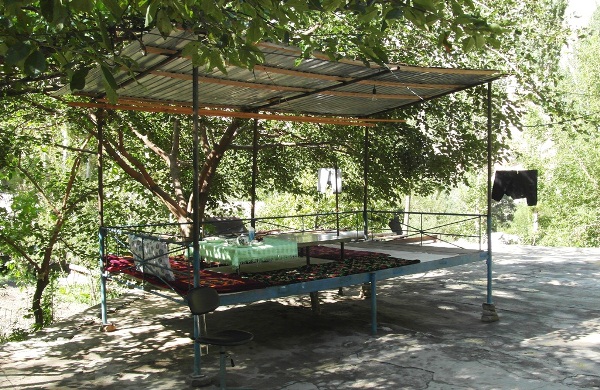
I was not surprised to find that neither home in which I stayed had indoor plumbing. However, both sat near a river or stream and water continuously flowed out of pipes in their yards in addition to traditional sinks and separate shower rooms.
In Shing, the pipes all seemed connected so that in order to take a shower, the water to the other pipes had to be turned off. Then, in order to get a hot shower, the water heater had to be turned on for about 15 minutes. Showering in Padrud didn’t pose such difficulties.
While I was initially skeptical about drinking the water in both villages, both of my hosts assured me it was safe and, sure enough, I emerged unscathed.

And of course, there were the toilets. In Shing, they had a typical squat toilet that actually flushed but in Padrud it was simply a “drop” toilet – a hole in the concrete that just opened out to the ground below. In both cases, my legs certainly got a good workout from all the squatting I had to do!

When my month in Tajikistan came to an end, I realized it certainly was not as difficult as I thought it might be. It was refreshing to experience such a simpler way of living, free from the distractions and stress that can plague my daily life back home, and it made me realize how trivial some of the things are that so often cause me so much worry. I also likely ate better than ever, enjoying home-cooked meals with mostly freshly grown products at every meal – and not drinking any soda or alcohol.
And I think it is safe to say that I will never again take for granted things like indoor plumbing, hot water, electricity and internet access.
